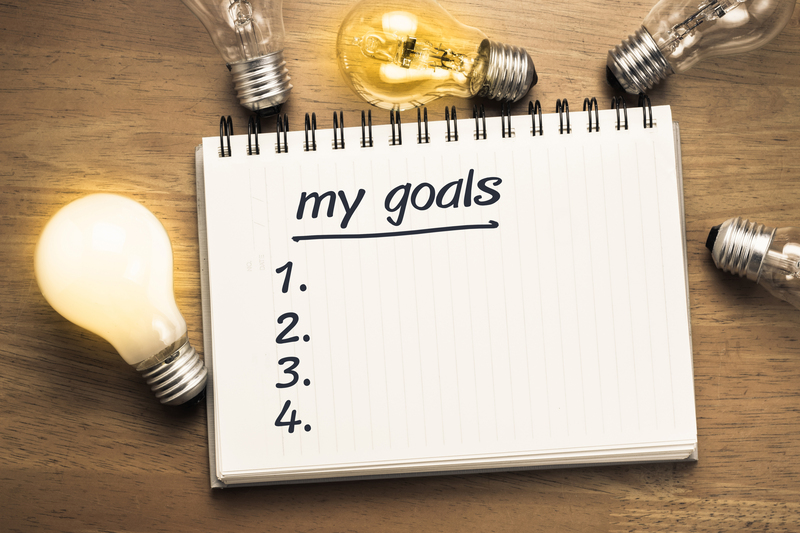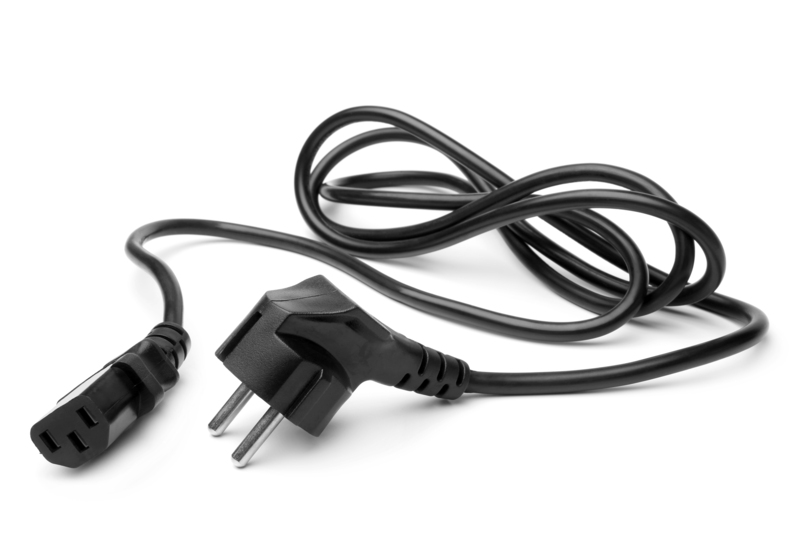Decluttering 101: Prepare for your house move efficiently
Posted on 17/06/2025
Decluttering 101: Prepare for Your House Move Efficiently
Moving house marks a new chapter in life, but it often comes with the stress of packing up years of accumulated possessions. The thought of transferring every single item to your new home can be overwhelming. That's where decluttering before a move becomes essential. This comprehensive guide will walk you through the entire process, helping you organize, reduce clutter, and make your move easier and more cost-effective.
Why Decluttering Before Moving Matters
_Decluttering before your house move isn't just about tossing out what you don't need. It's about entering your new space with a fresh perspective and saving time, money, and effort._ Here are some compelling reasons to take decluttering seriously:
- Lower Moving Costs: Movers often charge by weight or volume. Less stuff means a cheaper move.
- Less Stress: Sorting and packing only what you truly need makes the process more manageable.
- Fresh Start: A new home is the perfect opportunity to reset your living environment.
- Improved Organization: Uncluttered packing translates to uncluttered unpacking, making setting up your new space a breeze.

Step-by-Step Process to Declutter for an Efficient House Move
1. Start Early and Create a Plan
Effective decluttering before a move doesn't happen overnight. Ideally, you should begin at least a month before moving day. Use this timeline to avoid last-minute chaos:
- Six Weeks Before: Begin by sorting items in storage areas--attics, basements, closets, and garages.
- Four Weeks Before: Tackle living spaces, kitchen, and bedrooms.
- Two Weeks Before: Focus on daily essentials and fine-tune your decluttering decisions.
2. Gather Supplies and Set Up Sorting Zones
To keep the decluttering for your move organized, prepare boxes or bins labeled:
- Keep
- Donate
- Sell
- Recycle/Trash
You'll move room to room, assigning each item to the appropriate box. _Having distinct zones accelerates decision-making and minimizes confusion._
3. Use the Four-Box Method
This classic decluttering technique helps homeowners systematically reduce items. The categories, as above, are Keep, Donate, Sell, and Trash. As you handle each object, ask yourself:
- *Have I used this in the last year?*
- *Is it in good working condition?*
- *Do I have multiples of this item?*
- *Does this have sentimental value?*
Be honest. If the answer is mainly "no," it's time to let it go.
4. Tackle One Room at a Time
To efficiently prepare your home for moving day, focus your efforts on one space at a time. This approach prevents overwhelm and provides a sense of accomplishment after each area is completed. Consider the following order for best results:
- Storage Spaces: Garages, basements, attics, and sheds often house forgotten items and are usually the least used.
- Bedrooms: Clothes, shoes, and linens are prime candidates for decluttering.
- Bathrooms: Dispose of expired medications, beauty products, and half-used toiletries.
- Kitchen: Check for duplicate gadgets, unused dinnerware, and expired pantry items.
- Living Areas: Books, DVDs, games, and decor can accumulate quickly.
Decluttering Strategies for Each Room
Clothing and Wardrobes
The wardrobe is a common trouble spot. Under the _one-year rule_--if you haven't worn something in the last year, it's probably time to donate or sell. Don't forget to check for seasonal items or clothes that no longer fit. Preparing your wardrobe before a move will save space and make future organization easier.
- Bag up outgrown or unworn clothes for donation.
- Sort shoes, belts, hats, and accessories, keeping only what you love or need.
- Consider a capsule wardrobe for your new home.
Kitchen and Pantry
A cluttered kitchen can make packing a nightmare. Start by discarding expired foods and duplicate utensils. Then evaluate gadgets and appliances. _Only keep those you use regularly or anticipate using in your new space._
- Donate unexpired, non-perishable foods to local food banks.
- Recycle or responsibly discard appliances you never use.
- Pare down dishware and glassware to the essentials for your family.
Bedroom and Linen Closets
_Extra blankets, towels, and linens can take up unnecessary space in your moving boxes._ Keep only sets that fit your new beds or the anticipated guest needs. Donate or recycle what you no longer need.
- Keep two sets of linens per bed.
- Let go of worn out or excess towels and bedding.
Garage, Attic, and Basement
These storage spaces are often neglected but can hold a considerable amount of clutter. Items that have been boxed up or unused for years are good candidates for letting go.
- Dispose of outdated chemicals, paint, and broken tools safely.
- Sell or donate unused sports equipment, holiday decorations, and furniture.
Living Room and Common Areas
The places you spend the most time in often accumulate unnecessary items. Assess decor, electronics, books, DVDs, and other entertainment items. _Let go of anything that doesn't fit your current lifestyle or your new space._
- Donate extra pillows, throw blankets, or home decor.
- Sell redundant electronics, speakers, or gaming systems.
Tips for Successful and Efficient Decluttering Before Moving
Set Realistic Goals
Don't aim to declutter your entire house in one weekend. Break it down room by room and set achievable targets for each day or weekend.
Get the Household Involved
If you're moving with family or roommates, assign everyone a space or category to handle. Giving kids the responsibility to sort their toys, books, and clothes can teach valuable organization skills and speed things up.
Embrace the 'Keep, Donate, Trash' Mantra
Every item you pick up should go into one of these three categories. Efficient home moves rely on fast, decisive sorting--don't fall into the "maybe" trap!
Be Ruthless With Sentimental Items
_It's normal to feel attached to objects that hold memories, but packing and storing everything can weigh you down. Photograph meaningful items you can't keep, and gift family heirlooms to relatives who will appreciate them._
Use Technology to Sell or Donate
Digital platforms can help turn your excess belongings into someone else's treasures, or help you get items to charities and people in need. Try:
- Facebook Marketplace, Craigslist, or eBay for sales.
- Freecycle or local Buy Nothing groups for giveaways.
- Charity pick-up services for donations.
Schedule Donation Pick-Ups and Drop-Offs
To avoid piling up bags and boxes, arrange regular donation drop-offs or pick-ups as you go. Many charities offer free pick-ups for furniture or large amounts of donations.
Packing Less: The Reward of Decluttering for Moving Day
Once you've pared down your belongings, packing your home for moving becomes dramatically easier. You'll save on box costs and moving supplies, and your movers can work more quickly.
- Label boxes by room and content, and keep an inventory list to simplify unpacking.
- Pack fragile or valuable items yourself for peace of mind.
- Use high-quality, eco-friendly packing materials where possible.
Frequently Asked Questions About Decluttering Before a Move
Q: How far in advance should I begin decluttering for a move?
A: Ideally, start the process at least six weeks beforehand. This allows time to make thoughtful decisions, sell or donate items, and avoid last-minute scrambles.
Q: What should I do with items I'm unsure about?
A: Place them in a box labeled "Maybe" and set a reminder to revisit it in a week. Most people find that, upon a second look, many "maybe" items can be let go of.
Q: Should I store items instead of getting rid of them?
A: Storage units can be helpful short-term but can become costly. If you haven't used something in over a year, ask yourself if you'd want to pay to store it. If not, it's probably safe to let go.
Q: How do I encourage reluctant family members to declutter?
A: Set a positive example and involve them in the process. Let everyone know about the benefits--less to pack, move, and unpack, and more space for new things or activities in your new home.

Final Checklist: Declutter Your Home for a Stress-Free Move
Before moving day arrives, run down this ultimate decluttering checklist to ensure nothing gets left behind:
- All clothes sorted, bagged, and donated or disposed of.
- Kitchen gadgets evaluated, duplicates removed.
- Pantry and medicine cabinets purged of expired goods.
- Garage, attic, and basement cleared of unused items.
- Living room and decor items trimmed down.
- Books, children's toys, and games sorted and donated or sold.
- All necessary packing supplies gathered and boxes labeled by room.
- Donation pick-ups or drop-offs arranged before moving day.
Conclusion: Enjoy an Organized, Efficient Move with Less Clutter
Decluttering your house before a move is a transformative exercise. Not only does it make moving day smoother, faster, and less costly, but it ensures you only bring items that enrich your new home. By following these strategies and embracing a mindful approach, you'll start your new chapter unburdened and ready to enjoy your fresh space. Remember: the best time to declutter is before you move, not after.
Take charge of your move, optimize your home, and experience the practical and emotional benefits of a clutter-free new home. Happy moving!





